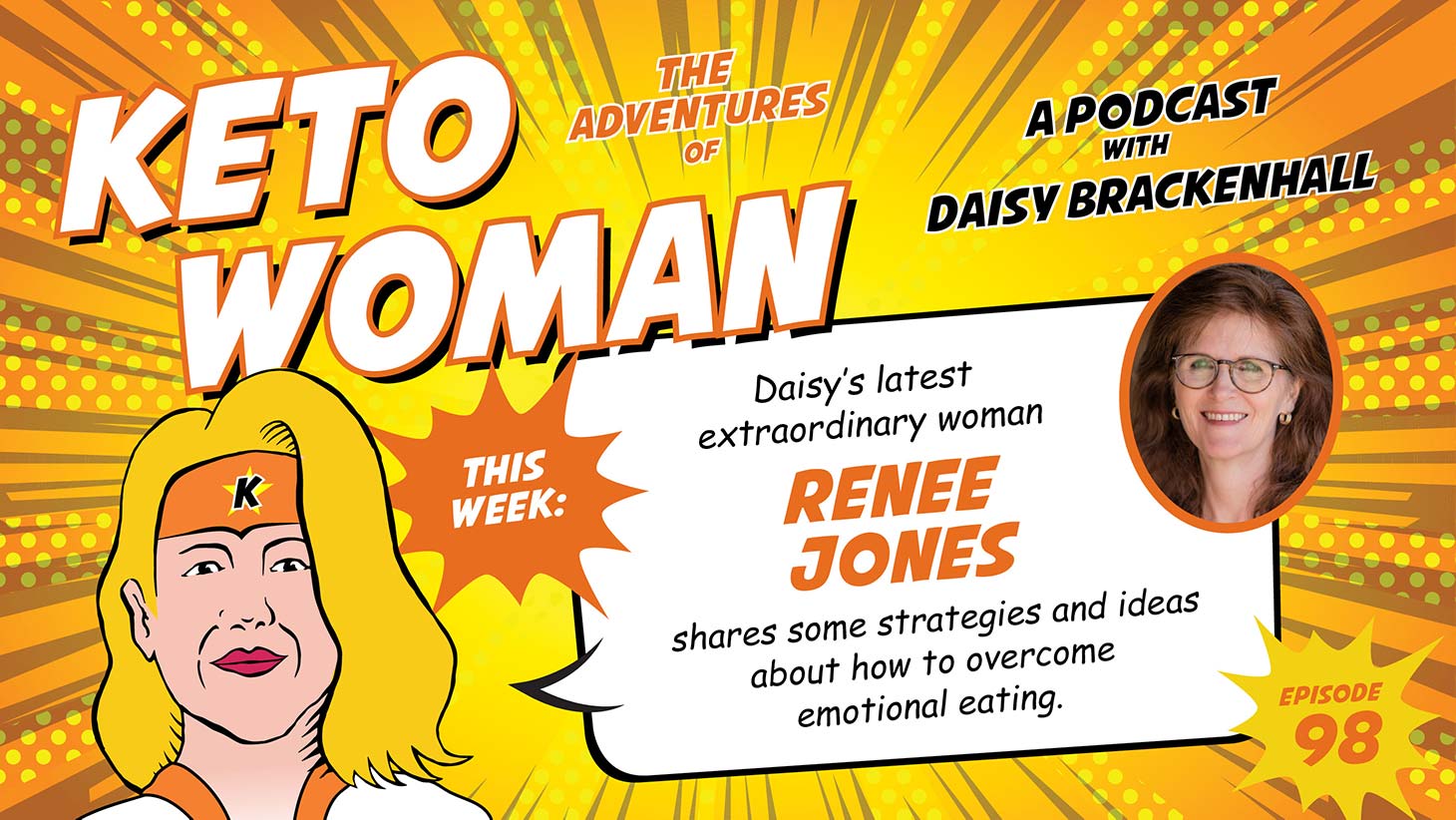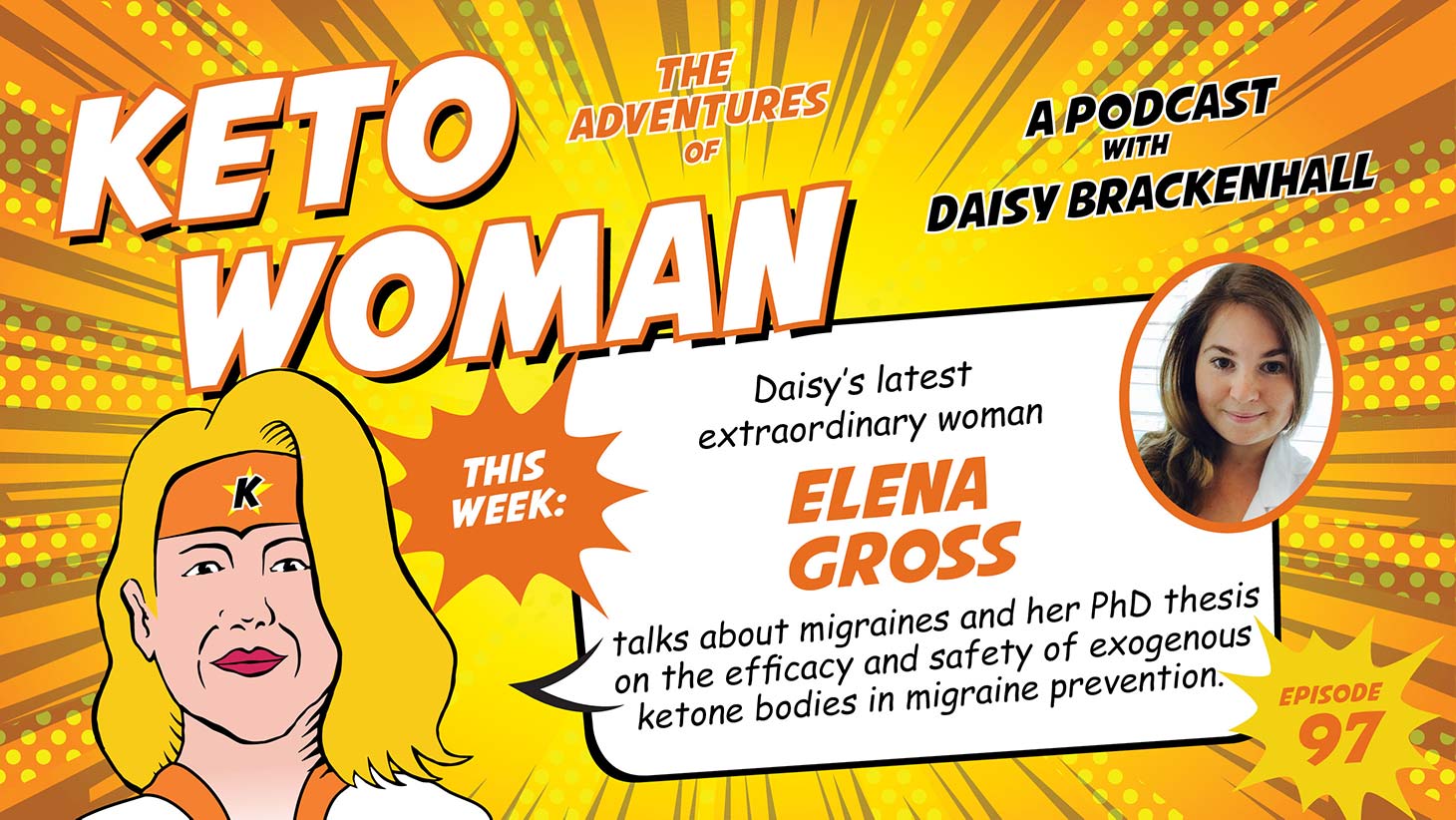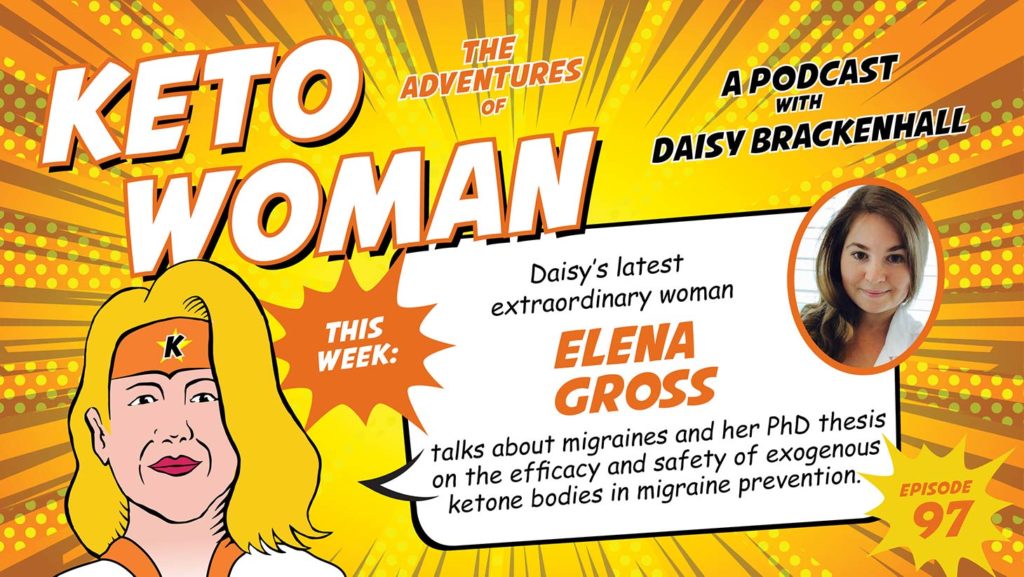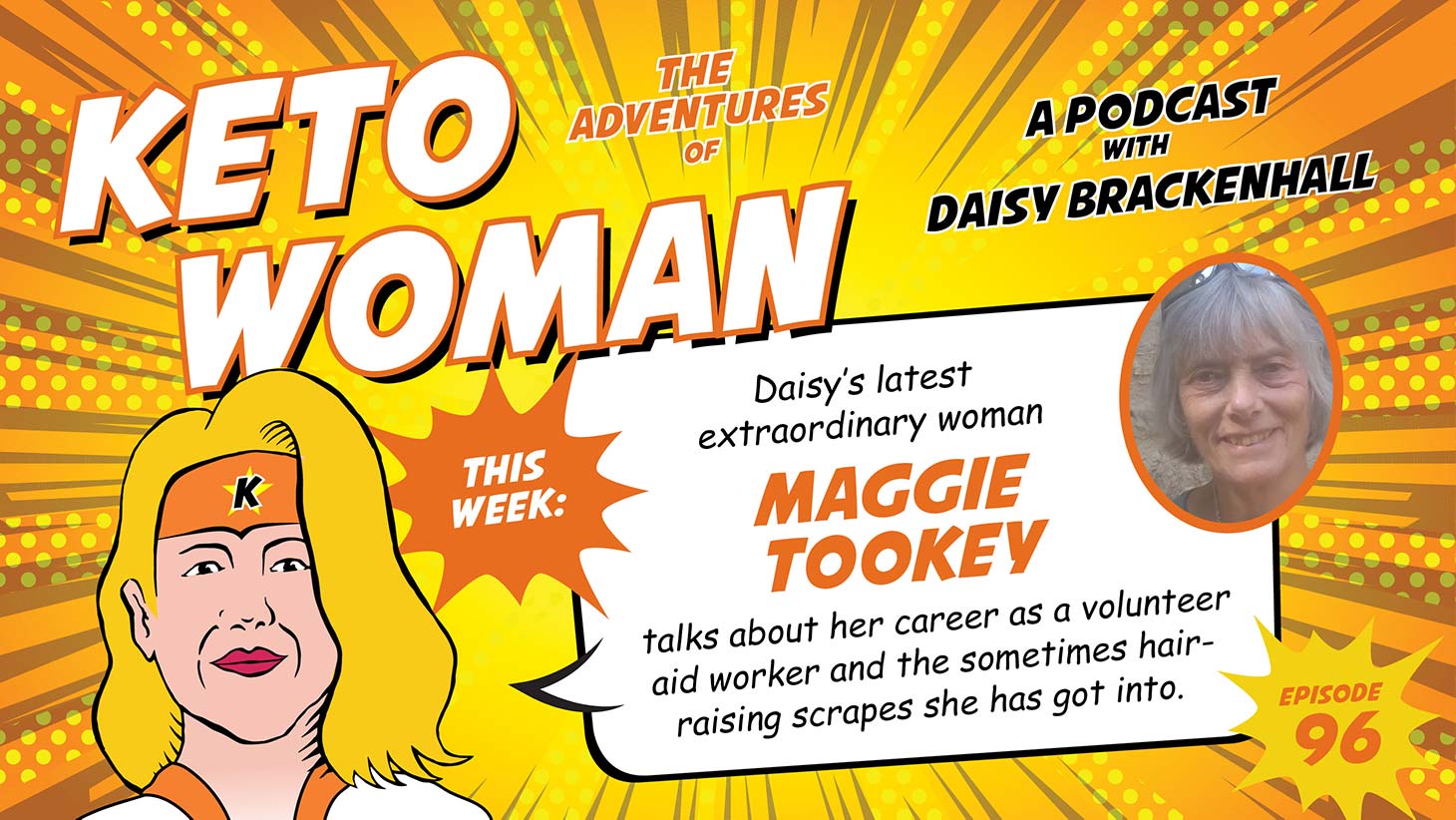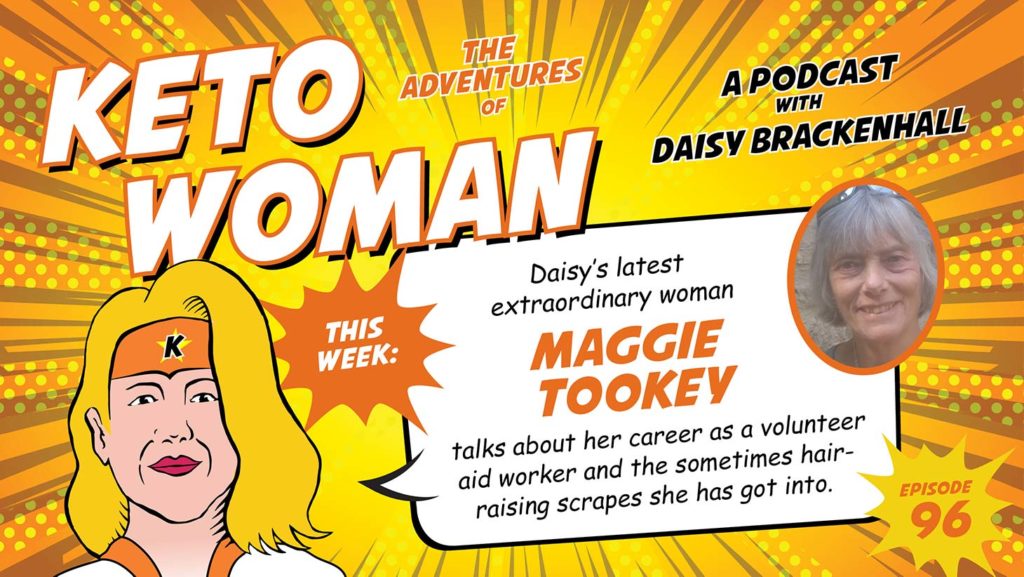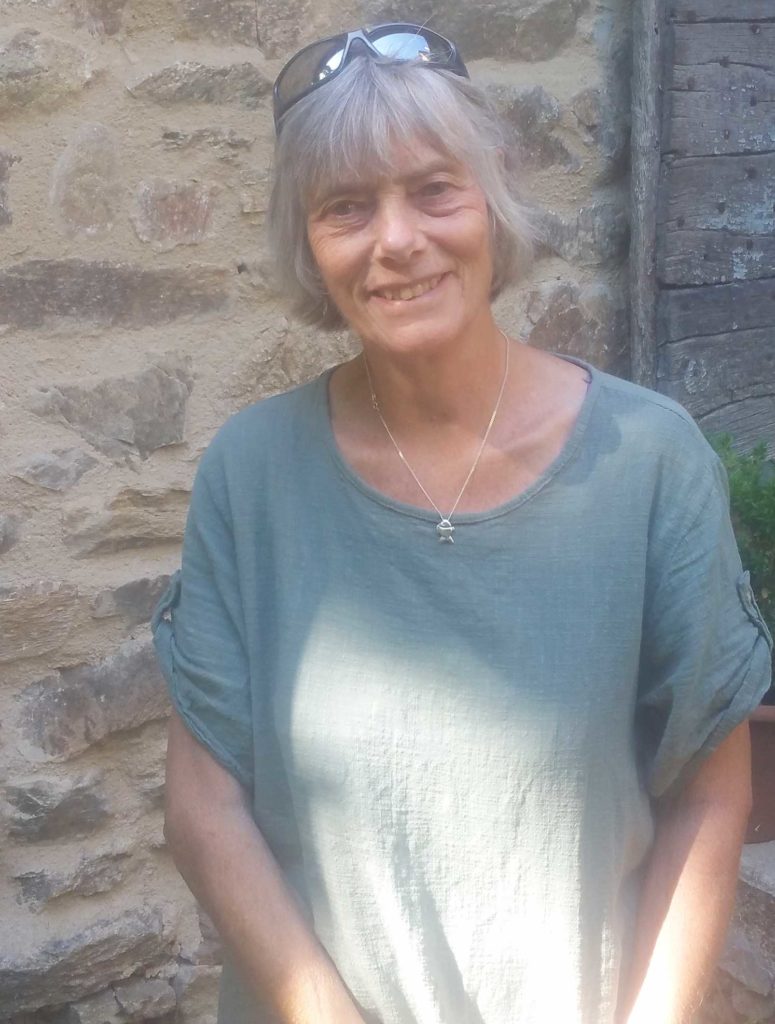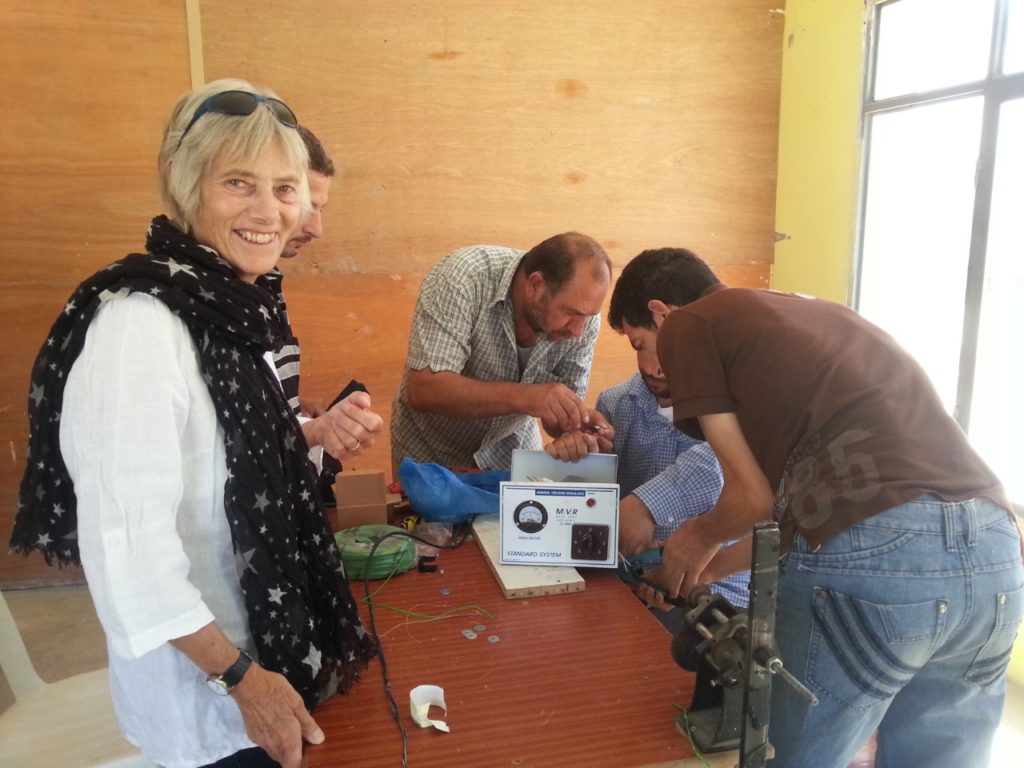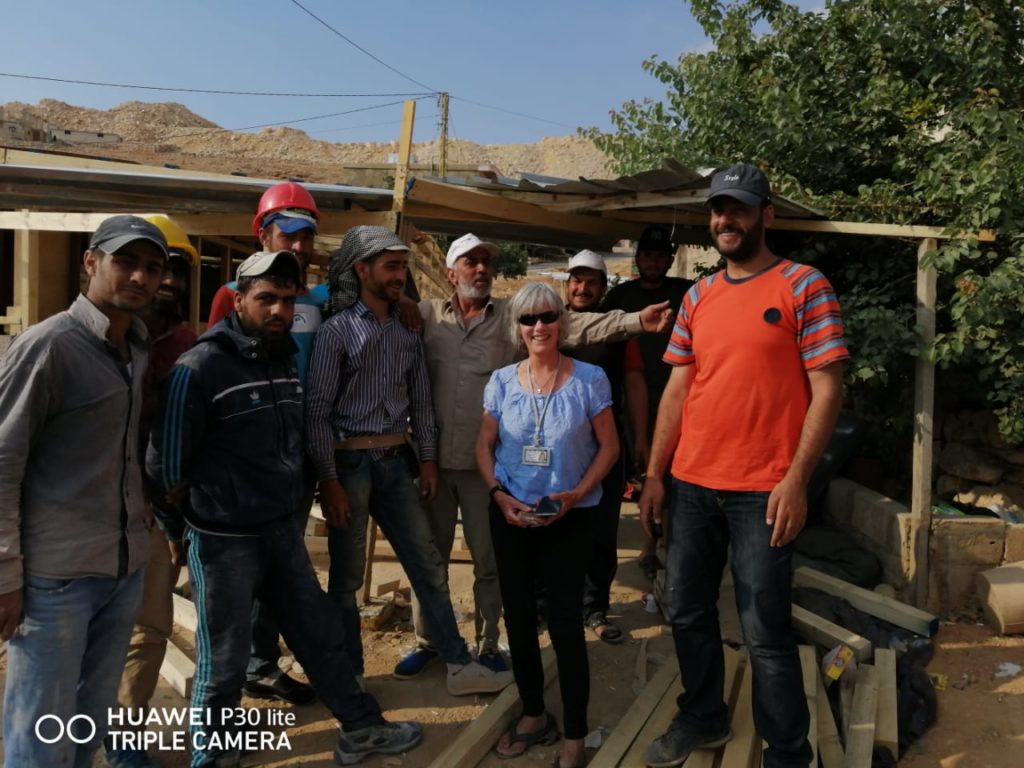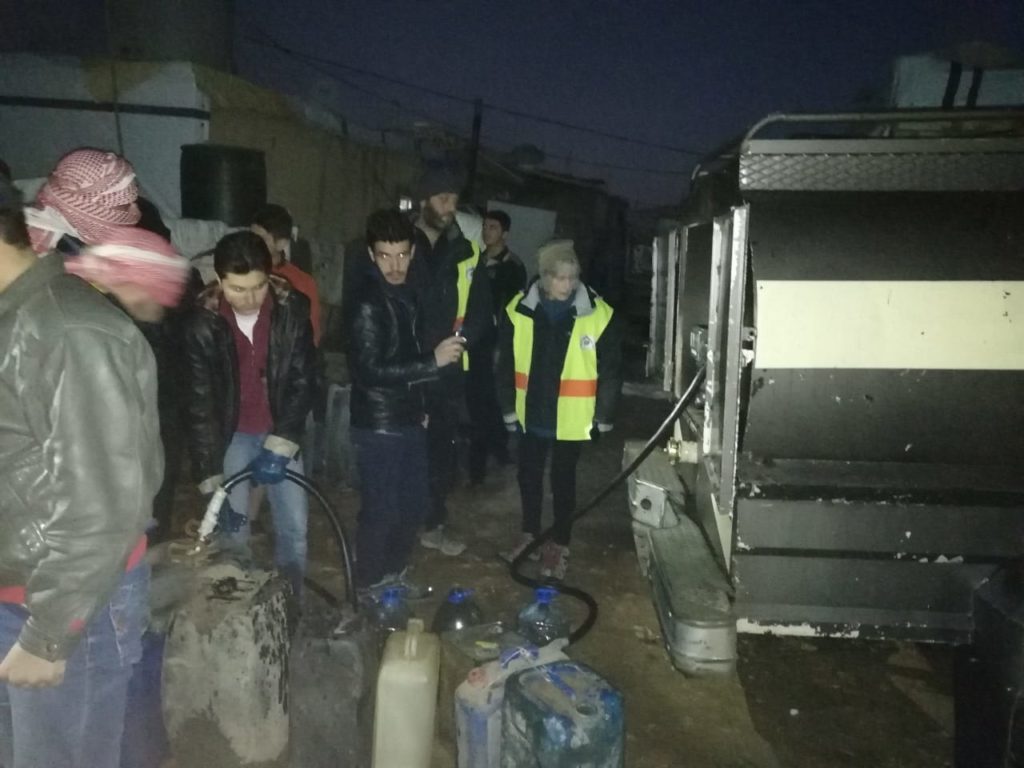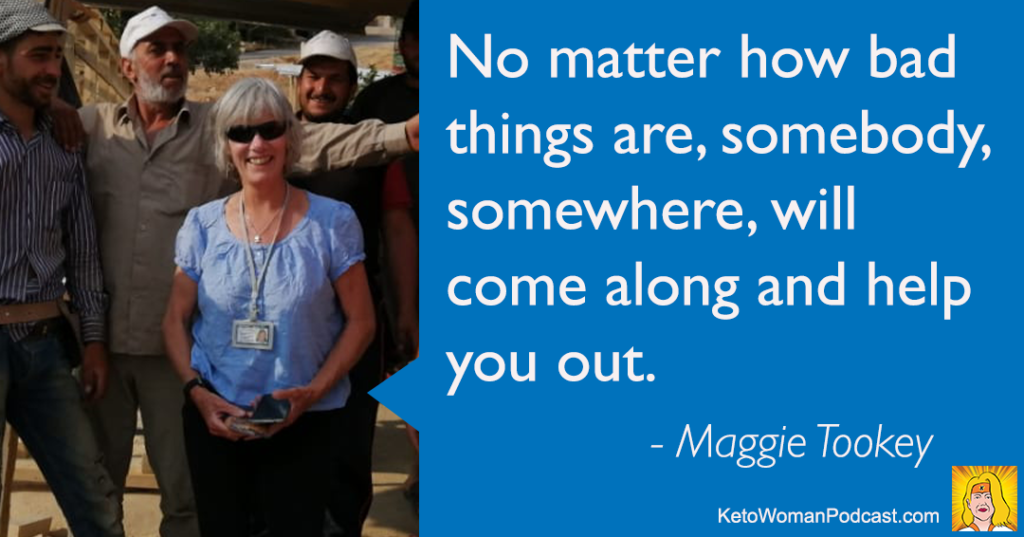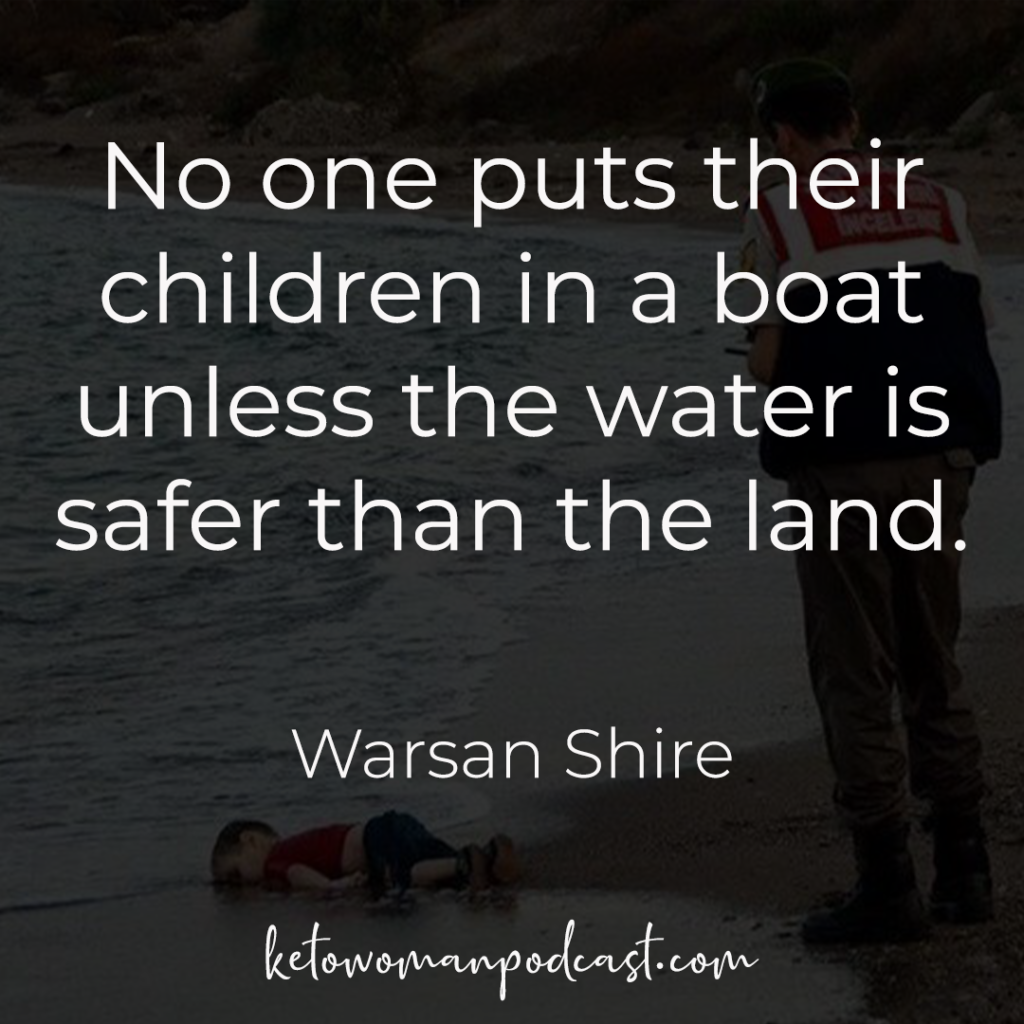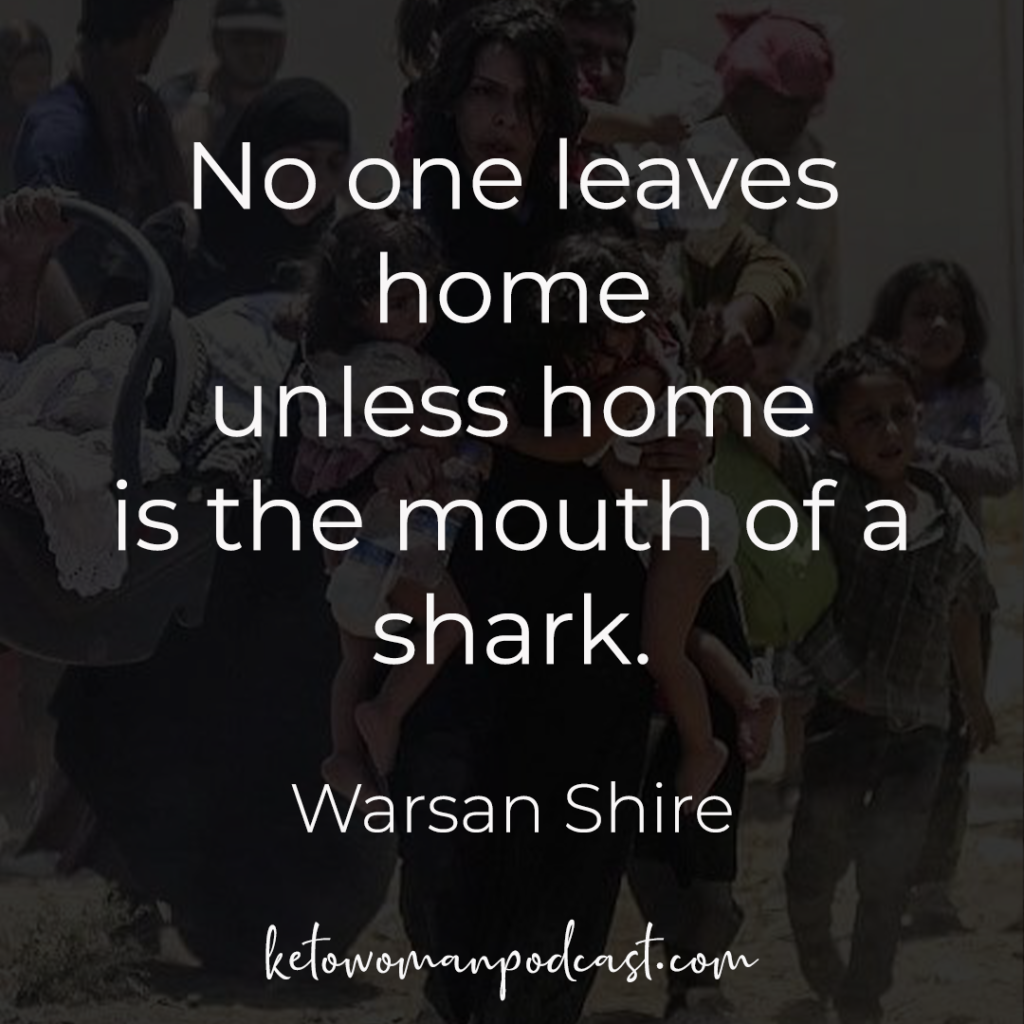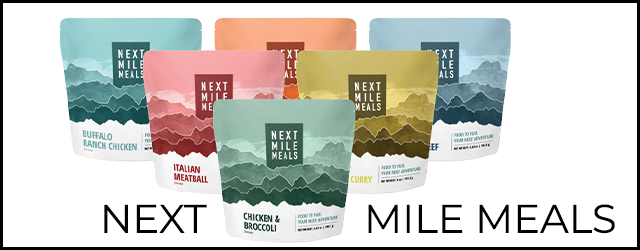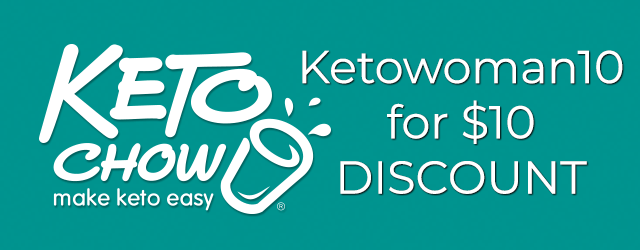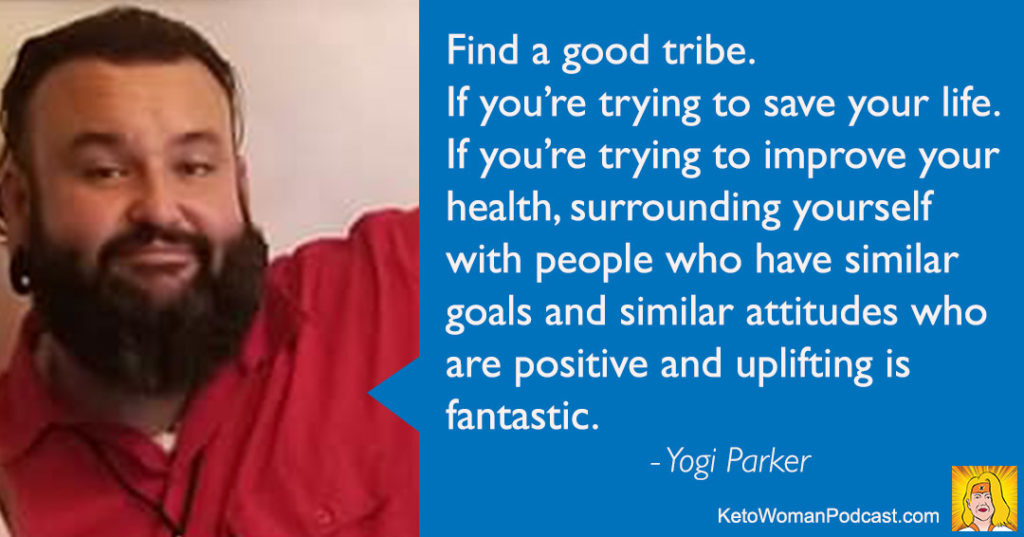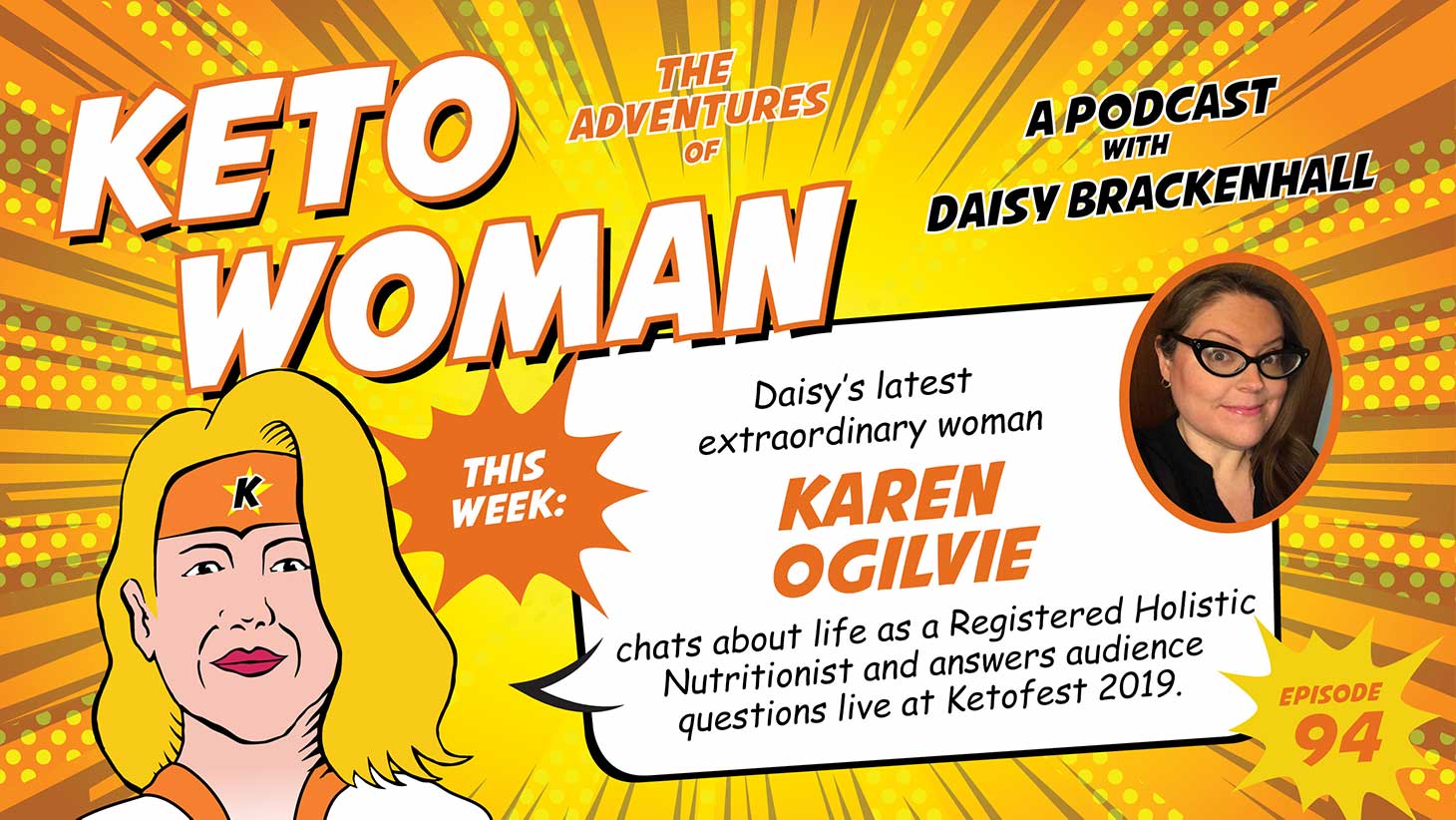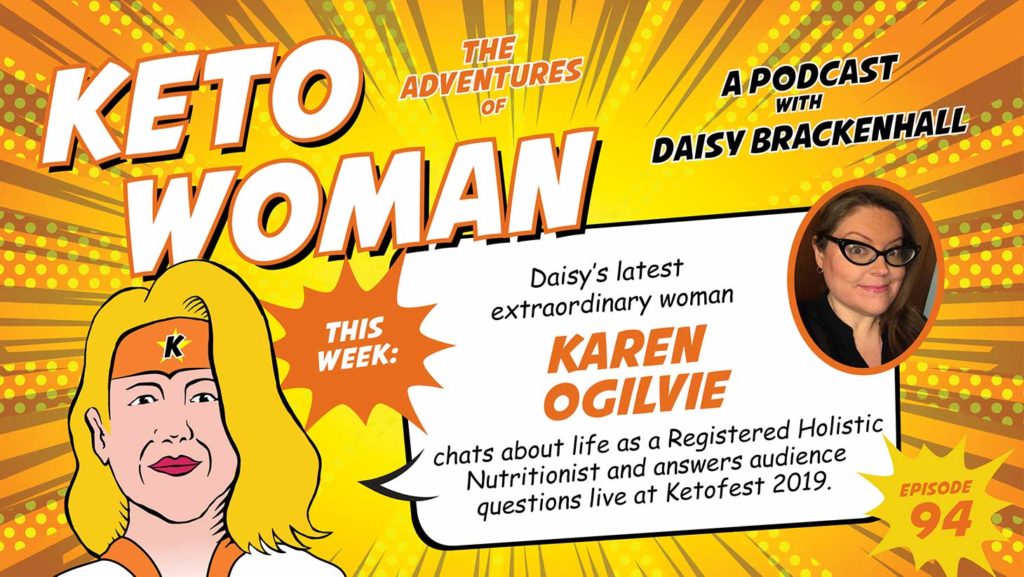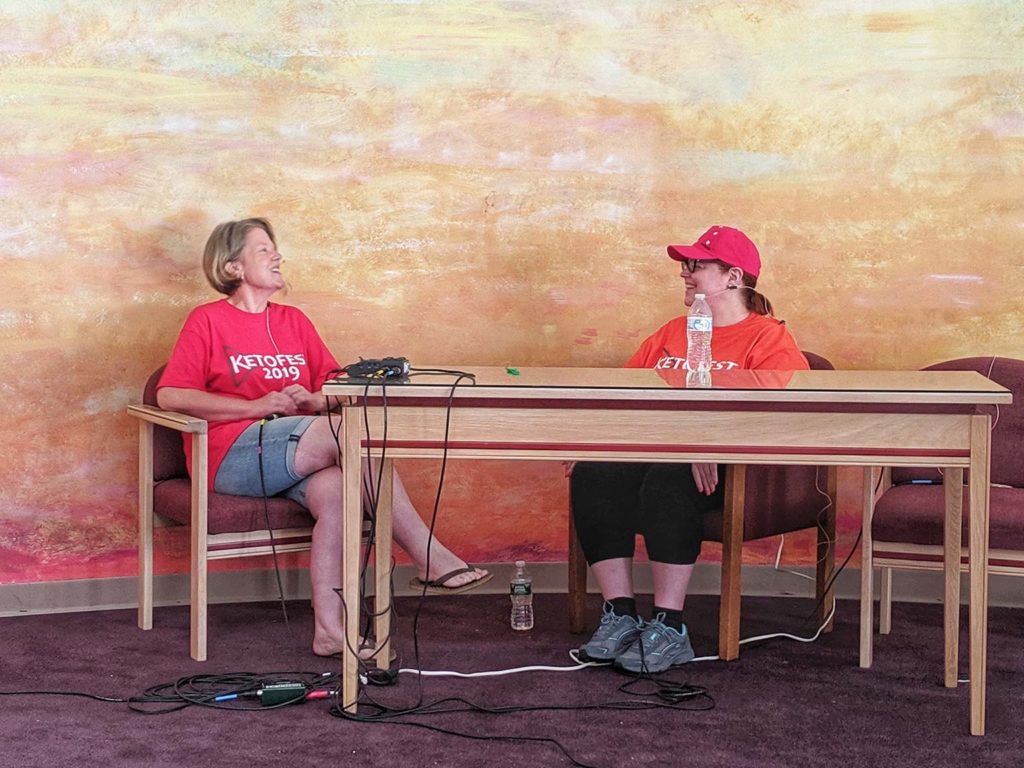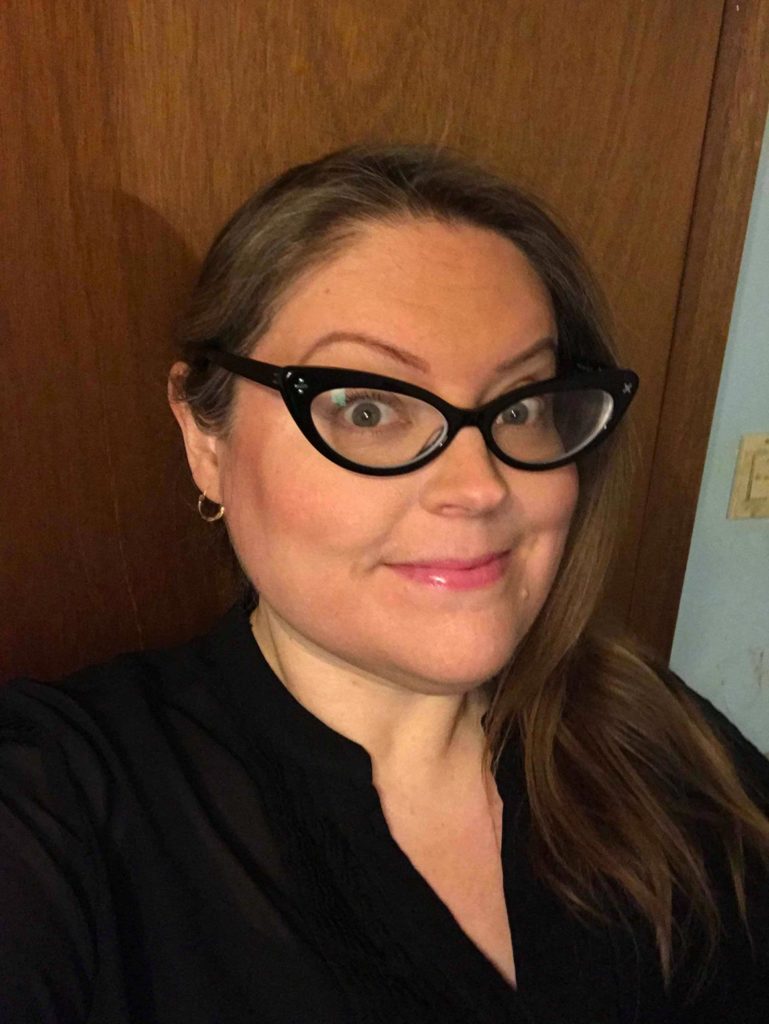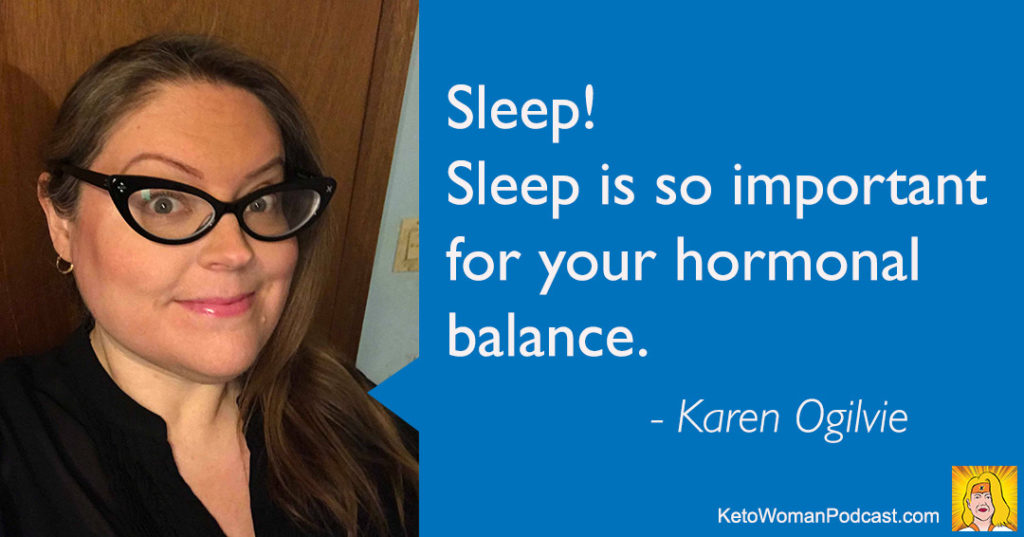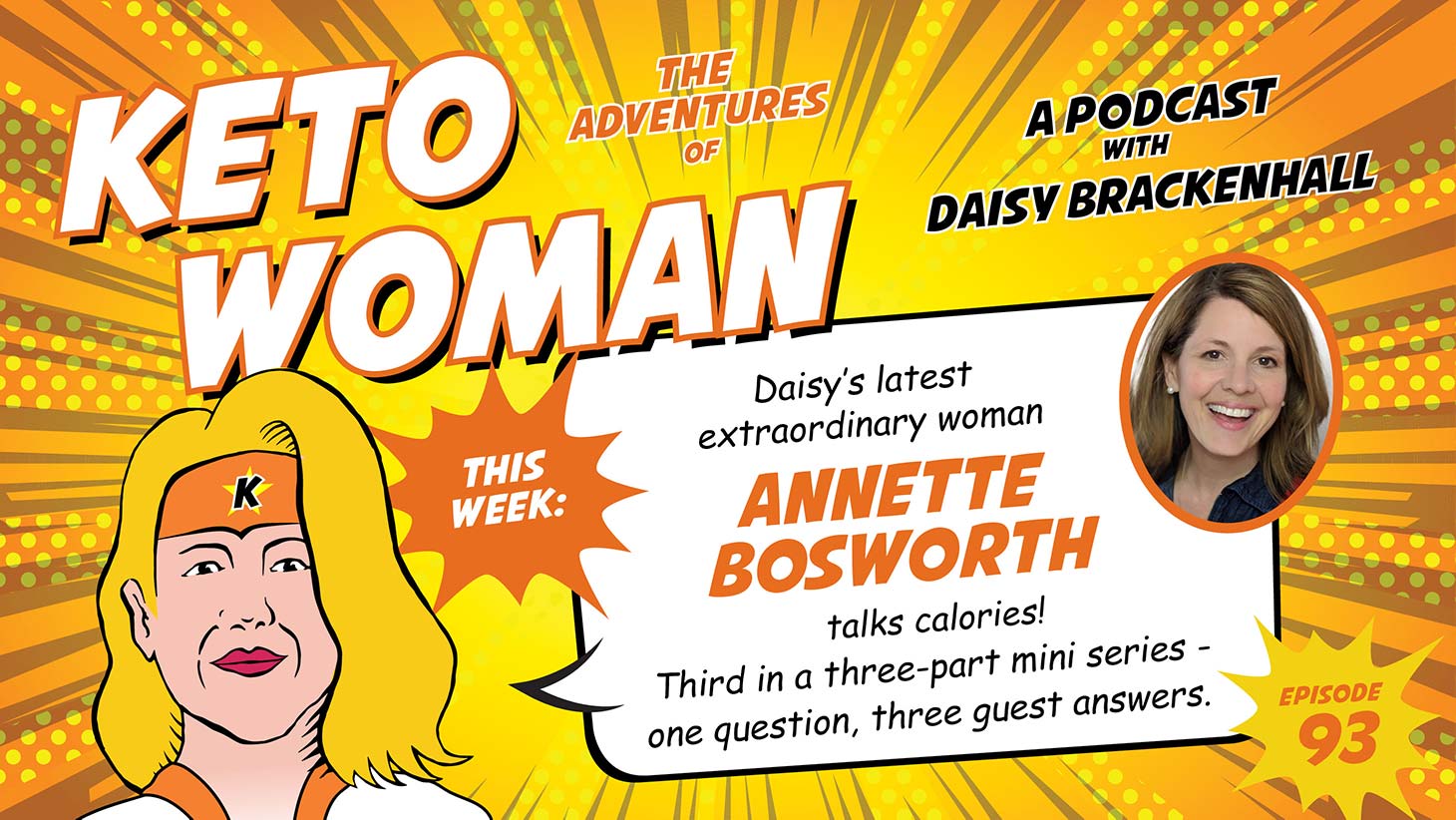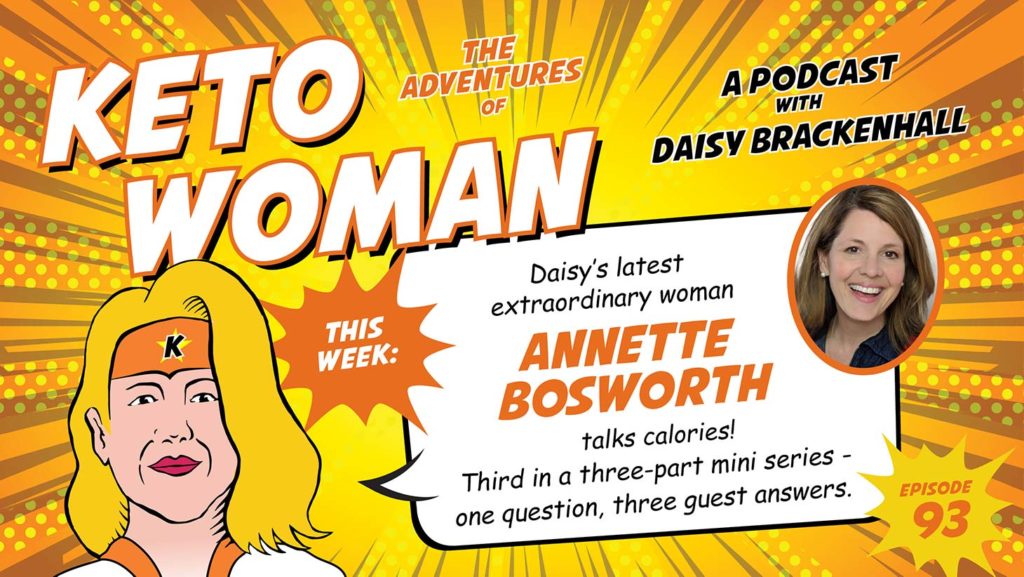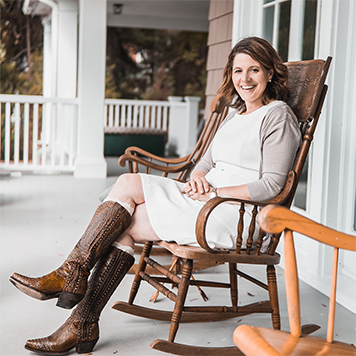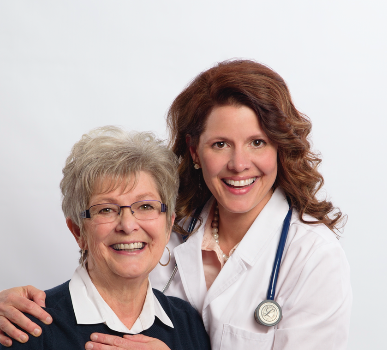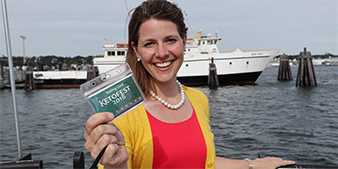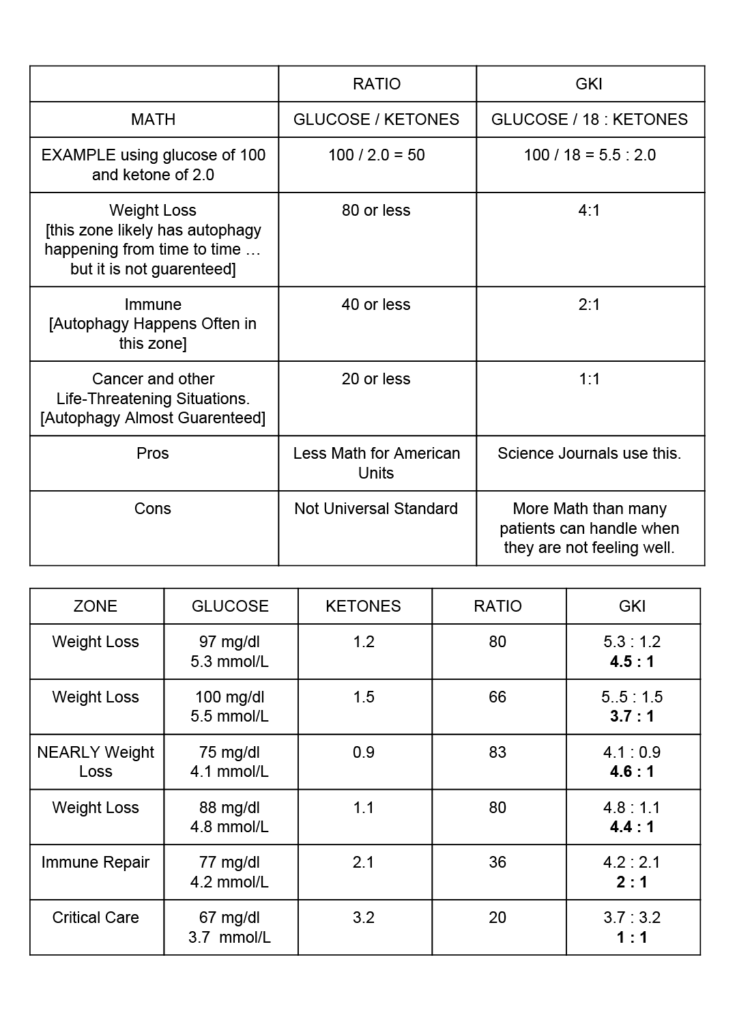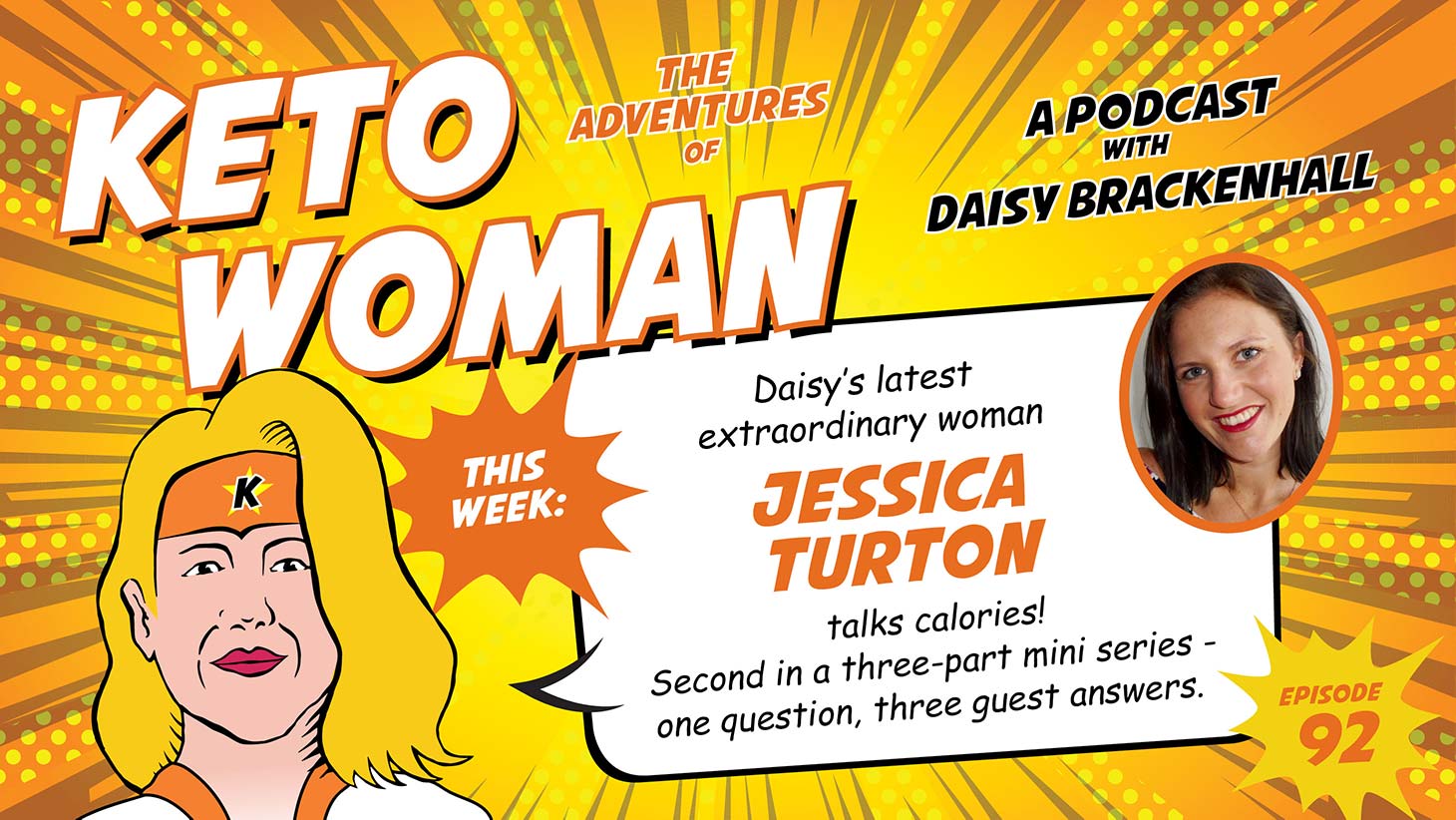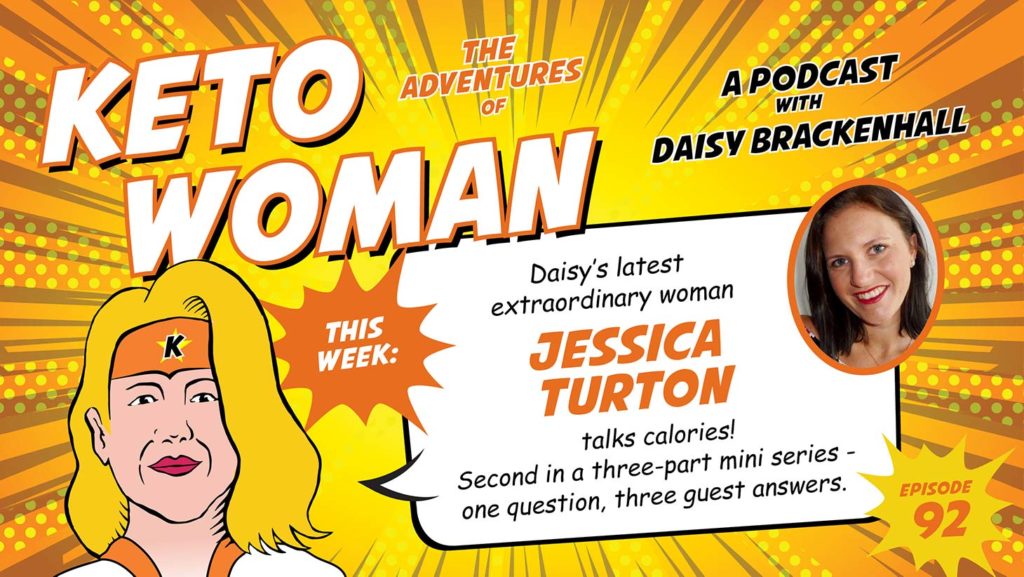This transcript is brought to you thanks to the hard work of Alison Gover.
Welcome Renee to the Keto Woman podcast. How are you doing today?
I’m doing well, thank you. Thank you for having me.
Oh, you’re very welcome. It’s nice to see you again. We saw each other at Ketofest.
Yes. Lovely to actually see you back and forth.
I know. It’s nice. It makes it extra special when you’ve met in person and when you see someone, well it’s like seeing them again almost. You have that memory of them being literally in front of you.
Indeed. Yeah. Terrific too get to hug people.
Yes. I’m a big hugger. Did you enjoy Ketofest?
Yes I did I mean it was obviously quite hard.
It was very hot.
We’re accustomed to that in Texas. It was a little unexpected there, but yeah, the festival was fantastic.
Yeah, it was good fun, wasn’t it? But like you say, hot.
Sunday was not quite so hot and that was great, but Saturday, yeah, I think I sweated out all my electrolytes.
That’s true. I ended up flipping burgers actually. Well flipping burger buns. I was walking around the plaza seeing how everyone was doing and Julie from Fox Hill Bagels was desperately trying to get all her buns flipped, and was stressing out because she needed help. So I put my apron on and helped her. But you could imagine in full sun in the heat that we had standing in front of the grill.
I was watching you guys, the sun was coming straight down on you. There wasn’t a cover and you were over that grill. And I thought good grief they’re all going to die!
It was incredible. And I wasn’t doing it for very long and I nearly melted. But the reason I brought that up actually was just to mention Chris Bair from Keto Chow. Luckily not far away, was the Keto Chow stand. And he came over with these beautifully cold bottles of water ready, filled with some electrolytes, which was an absolute mercy. Really, really helped. Because as you say, when you’re sweating and it’s hot like that, you’re just leaching out all your electrolytes and that just ends up making you feel worse, doesn’t it? So enough Keto Fest chatter, tell me a bit about you.
I started my first diet when I was 10 years old and my mother thought, well, if we get this sorted out now, then you’ll be good for the rest of your life. And unfortunately, she had been sort of dieting all of her life as well, and wasn’t very good at it either. So that started the diet yo-yo for us, for me, in particular, and we’d get close to our goal and then something would happen and we’d go off somewhere else. And it just was 40 years of the diet yo-yo for me. But in 2012 I was staring down my 50th birthday and I thought, okay, I’m about to turn 50 things change for women. And if I don’t lose it now, it’s never gonna happen. So I thought, right, we’ve got to get this sorted out now. And you know, I started New Year’s Day and I did pretty well for a couple of weeks and then fell off another couple of weeks and fell off. And by April I actually needed a bigger size. So I was going right the opposite direction.
Well that’s what happens, isn’t it? That’s the problem, it’s just one of the known things about, well, I suppose any kind of diet, actually you could include Keto in that, if you do any kind of diet where you lose weight and then you go back to your old habits, you not only regained the weight you’ve lost, but a little bit more as a nice little bonus.
So I decided to do some research and I recognized that my major issue was because I ate for emotional reasons, if I was stressed or upset, I would just go straight to the refrigerator. So I thought, okay, we have to sort this out. I’ve got to get a handle on that. So I did and I started losing weight and I actually reached my goal weight the week before my 50th birthday. And I’ve been there ever since. So it’s now coming up to seven years of staying right here where I am around somewhere between 115 and 119 pounds. So I’m only five foot three so there’s only so much this little body can carry.
And I know in the notes you sent me talking about it, that you actually, that first chunk of weight you lost when you first hit your goal weight, that was nothing to do with Keto, am I right?
No, it was, it was low fat, low calorie deprivation, starvation kind of diet.
Not much fun then.
It was awful. But I thought, okay, this is what I have to do to get there. This is what I have to do. And unfortunately when I was trying to maintain it, it was a real struggle because I’ve found that you lower your calories, I never went below 1200 but still, I just couldn’t seem to eat too much more and maintain my weight. So two years later I was sort of tired and hungry and really cranky all the time. And I thought, okay, there’s something wrong with this picture, I’ve got to do something different. So I got back on the Internet and was doing some more research and I found a metabolic test and when I got the results of it, it said, you need more fat in your diet. And I thought, fat, fat, we’re not supposed to have fat. So I went through that initial thing. But what I found interesting was that they gave me a diet, it was, it was low carb, it was pretty much Keto throughout the day. But in the evening you got some grain, but not a lot of it, just a small portion. And I was having butter and cheese sauce and thinking I’m going to gain weight, but I lost two pounds that week and I was already at my goal weight.
So I thought this is not supposed to happen, this is weird, I was sort of skating around things and still having some sugar here and there and all of that. And in the New Year, I guess that was 2015 I started finding stuff on Keto and I thought, okay, this sounds weird, but all right. And I would play with it a bit, but I wasn’t willing to give up my sugar yet, so I wasn’t getting, the whole ketone thing. But I finally decided, okay, I made a rule for myself. I only have sugar on Sundays and after about 10 days, the first week was really hard, but after about 10 days I was like, oh, okay. I see how this feels. I really don’t like the effect of sugar on my tongue when I have it, it’s just this funny feeling. So okay, we’ll just give up sugar, go straight into Keto in April of 2015 and I have tried to find my balance. It took me a while to find what I really needed to do, but I love it. It’s fantastic. I don’t feel hungry all the time. I still have to sometimes think, okay, what are you hungry for? You’re not really hungry. What are you looking for? And sort through that emotional side. But it has worked very well for me.
And so presumably that’s just a much more comfortable way of maintaining that weight loss, a happier way.
It’s much happier way. So I get bacon and butter, what else do I want? If I really need a snack, I’ll go do some bacon and that makes me happy.
That’s a problem, isn’t it? If you’re having to eat in a way that, as you just said before, it was making you cranky and irritable and so it’s a bit of a white knuckle ride the whole time trying to maintain it. That’s a lot of energy. You’re losing doing that.
Yeah, but you’re right. I mean there are times when I get hungry on Keto, but it’s because either it’s been a long time since I ate last or I didn’t get enough fat in my meal at the last one and that I’m beginning to recognize, particularly if I’m like at a conference or something and they serve a meal, I have to make sure I get the fat or I’ll get hungry.
That’s interesting isn’t it? Finding out what for you are the things that really keeps you satisfied and I see a lot of people playing around, particularly with the protein to fat ratio. It seems for some people adding more protein is the trick and the fat makes no difference. You know, obviously I’m not talking about them eating low fat, but that doesn’t make the difference. Whereas other people, if they up the protein too much it actually makes them hungry and then it’s all about just figuring out what that perfect balance is for you.
It’s what works for your body, it’s really important.
And so you’d already approached this whole massive area that affects so many of us, of the emotional side of eating before you even started Keto, so you kind of had a handle on that, well, had more than a kind of a handle on it. You had a handle on it going into Keto, but a lot of people, and I’m one of them, it’s still something that I very much struggle with, going into Keto and they see so many people saying, “Oh, I’m not hungry anymore. I eat till I’m full and then I stop. I don’t have cravings, everything’s fine and rosy and dandy and I’m losing weight and everything’s golden” and it seems to work that way for some people it often seems to be men, and I’ll ask you about that if there is any kind of difference in experience between the genders, shall we say, but I think for a lot of us it’s this bit that’s missing in the picture, I think maybe this is a predominantly female thing as well. We think it’s something that we’re doing wrong that we’re failing because Keto isn’t working as well for us as it is for other people, so it must be something that we’ve done wrong and then we start beating ourselves up and obviously that’s going to just fuel back into the whole problem with emotional eating. Perhaps you could just give us some guidelines, I know this is what you do, so we’ll go into all of that. How did you start doing this? Is this something that you’ve always done? Is this something that you started doing via your own experience? I’ve thrown a lot of questions at you there, so you just start where you want to.
The counsellor and coach in me says, no, you’re not doing something wrong. Lose that thought because that’s not going to help you at all. The problem is that from birth, when a baby cries, Daisy, what do we do? We usually put something in their mouths, whether it’s the bottle or a breast or the pacifier to get them to stop crying we put something in their mouths and it works. So very much it is how we are trained, how we are wired. When we are upset, we put something in our mouths and the problem came when we changed out that dummy that pacifier for a donut. So it’s something that’s hard wired in us, this is how we work and just like, I don’t know how it was in school for you when you were first going to school, but we walked everywhere in a straight line, eyes forward, hands beside our side, whether we were going to the playground or to the cafeteria or to another classroom. But as we got older, we didn’t have to do that anymore. We learned other ways to get where we were going to go. So it was what we were taught as children and as adults we have to learn, okay, I’m upset. I want some soothing. How do I get that soothing in a way that is appropriate for me, for my situation, for my personality, for who I am. So that’s kind of the progression.
And one of the things that I teach to my clients is it’s not hard to overcome emotional eating. We just have to get the hang of it. And I use hang as an acronym. So the H is am I hungry? And if you’re hungry you probably do need something to eat or you need it soon, right? So if you’re not hungry then go to the A, what is your attraction to food right now? What’s going on? Because there’s always something going on. If we’re crash landing in front of the refrigerator, it’s not just hunger. There’s something within us. So what is that driver and then the N, what do you need other than food? What would soothe you right now? What would help you? What would make you feel a little better? And then the G is go, go get that. Because that will soothe you more than any food ever could. And it’s a process. You’ve been doing it the other way for a long time, so give yourself some grace to work your way into it because once you get the hang of that, then it’s like, oh, okay, what do I need? Um, I need some time with my dog, or I need a hug or I need some help with this project, and then you can get that and it’s much more soothing. Does that make sense?
It absolutely does. I’m just trying to figure out, and presumably it’s a question to a certain extent of simply practice and some kind of discipline in kind of forcing yourself through those steps of exploration in the first place. Because it feels to me, and I know this battle’s gone on in my head, and it can be as you’re walking to the fridge or as you’re walking to whatever contains the item of food you’re going for. I’ve had that conversation in my head as I go there. You’re not hungry. I know I’m not hungry. I know I’m not going to it for that reason, but I guess the problem I have is that that argument is very limited. It’s just, you’re going there for the wrong reason, don’t do it. And the other side is, but I don’t care. I’m going anyway. And it’s this battle battle, battle, battle battle and the “I don’t care, I’m doing it anyway” pretty well always wins. But I’m guessing from what you’re saying that that’s a bit of a negative feedback loop in a way. What you need to do is harness that critical voice and turn it into a different practice.
Yes. Well, and if you can, you obviously recognize, “okay, I’m going to do it anyway”. And sometimes that is a choice. You get to make that choice. You’re an adult, you get to choose that and then you can deal with the consequences later. I often reckon it to paying taxes. We do that because the consequences are great if we don’t. So you have to make a choice there. What will be the consequences for me? Well I won’t get to my goal weight or I will gain, and you know what? That’s okay. If that’s where you are today, that’s where you are today. Tomorrow you may be in a different place and it is the perpetual making different choices that get you turned in the direction that you say you want to go. Well if you don’t want to go there, don’t go there.
But don’t beat yourself up for it because that’s not what you actually want. And I think learning to choose what you actually want in any situation begins to lessen the hold that has on you. Because it is, it is such a mental process in the end and it’s healing some of those wounds that you may not even realize right now. And that’s, you know, that’s how people end up with me for long periods of time is cause we’re trying to figure out, okay, what exactly is going on and why are you bucking against that? There’s something deeper there because in the end it all comes down to what is the driver of this behavior. And once you figure that out, then you can change the driver. But it is a process and beating yourself up only sends you to needing more soothing, right? And then you get into that perpetual cycle of beat myself up, I need soothing so I eat and then I’d beat myself up for that. And it just keeps going.
And how’s the best way to try and start breaking out of that then?
It is a choice in the end, it is, okay, what do I actually want? And if it’s food, then the consequence is that you will probably gain some weight and that can be okay. But giving yourself the freedom, I know it sounds kind of silly, but somewhere within us likely there is a small child who was not given that freedom and we have to soothe her or him and get that taken care of. This became very clear to me right after my grandmother died because when my mother had passed away a few years earlier, I crawled into the refrigerator and I gained a lot of weight. And when my grandmother passed away, and we were tight, oh my Nan and I were really, really close and I thought, okay, I can do that again and gain more weight or I can start breaking some of the connections that I have with food and her and get better myself. So it very much comes down to a moment that affects you and how you choose to go on from there.
And I do think when you were talking about making that choice to sometimes to eat and there’s going to be that potential consequence of gaining weight or if it’s the wrong, in quotation marks, food it could make you feel ill I do think, well I found myself anyway that Keto gives me some kind of freedom in that that is much more limited.
Yes.
With high carb food, I literally go completely off the rails. You know, the train goes completely off the rails and it goes absolutely crazy. And I can gain weight like you wouldn’t believe in a really short period of time.
I would believe.
But at least with Keto, I’m not saying it’s solved the problem because it hasn’t, but it does limit it and that there’s still some overeating that goes on, but it doesn’t go completely off the rails.
Right, because carbohydrates always want more. You cannot satisfy yourself on all of those carbohydrates. You just can’t, they don’t fill that need in the same way. They’ll fill your stomach in the same way.
Yeah. So it’s that combination, isn’t it, of what you’re still lacking with this needing to fill this emotional need that’s going to exist. If that’s an issue that you have, whatever you’re eating.
Yes.
But if you can remove the physical side of it, it is going to help, isn’t it? It’s going to make it a bit easier to maybe start tackling the emotional side.
Yes. And it does help when you’re not hungry all the time. It is so much easier to overcome emotional eating when you’re not starving because you don’t have that panic of, your base self saying I’m starving, I need something. Well you’re not gonna be starving. If you’re eating Keto, you’re going to be a little more satisfied once you work out what works for your body. But you also, as you say, if you eat something off plan then it kind of makes it worse.
Yeah. And it can really start a binge type cycle. I mean I see so many people. It’s when you talk about the whole, I think this would be an interesting thing to talk about, the whole question about a cheat day or some kind of planned off plan eating and people as much as the plans they make, it’s just going to be for one meal or one day or one holiday. The risk is, and for some people it does work like that. You know, I’m just going to do this while I’m on holiday for example. And when I come back everything goes back to normal. And there is some kind of logic in that and I’ve, I’ve found for certain things that works for me, I actually do that with chips or French fries as Americans call them. I will not make them at home. I never make them at home. I don’t allow them through the door. But if I’m out somewhere, at a restaurant, I don’t go out that often so it’s not actually something that arises very often. If they look like they’re good, I won’t bother if they’re not good chips, then will have them and that for me works. But for other things, interestingly, the crisps or chips, this whole translation with food thing I find fascinating.
It’s amazing. Yes.
But those that doesn’t work. If I have those, even if it’s out of the home, that will lead to a cycle that ends up with me buying them and bringing them into my home and before I know it it’s every day. So it’s interesting, I think that some people can do that, putting it in a certain box and managing it that way. Some people can do it with certain foods, but a lot of times it ends up just starting this cycle that one day, one week’s holiday turns into, before you know it, weeks, months, years even.
I think if you think about that in terms of other places where you are disciplined, then it might give you the tools to apply that same discipline to this unless you choose not to. And that’s fair enough. I went to a wedding in April and there was literally nothing, nothing that did not have some kind of sugary coating to it. And I thought, okay, I can either be really rude to the hosts and not eat at all. Or I can say, all right, it’s one evening, it’ll be fine. So I went with that, so as not to be rude. I didn’t need a lot, but you know, I tried to enjoy every bite of it. And I think that’s one of the things that’s key. If you’re going to have something, try to enjoy it because you’re going to pay for it later. And two days later I snapped at my dear sweet husband and I said, oh gosh, this is the sugar talking, and he was like, okay.
And I recognize that when I have the sugars or carbohydrates in excess, well, in sugar, anything is excess, right. It does affect me emotionally that blood sugar high and low makes me ratty. Hence the reason I try to stay away from it, but I try to enjoy every bite and I have to say it was all very good, so I enjoyed it and then had to deal with the consequences of my day of not feeling my best because I was just, oh, everything was irritating that day. It is just not worth it to me to do that in another setting, you know? Unless I’m being rude to somebody, then I was like, okay, I don’t want that awful feeling of being that ratty so I won’t do it.
I think a big part of it is being mindful and aware of what’s going on, isn’t it? I often say to people when they’re in that day afterwards and they’re feeling whatever they’re feeling, whether it’s emotionally bad, physically bad, both, I say to them, record this in some way. You know, make a video of yourself, write it down, whatever it is in the moment when you’re feeling it, make a note of it because we’re very good, aren’t we of forgetting.
Deleting those memories, yes. That particular day was very stark to me, so I thought, okay, now you’ve got your memory to hold onto. So do that.
And this work that you do with emotional eating, is this something that you’ve always done or is this something that developed because of your own experience to apply to the counselling work that you do?
Well, I was a counsellor obviously before that, but yes, the focus on emotional eating just came out of my own experience and recognizing that a lot of other people struggle with that as well. And I think sometimes when you’re in the desert and you find water, you want to share it with others because if I can help someone else overcome their emotional eating, that’s wonderful. Because it’s helping them heal their heart a little bit and there are so few opportunities to do that with people that I want to take everyone I get
Tell us a bit more about that. Tell us a bit more about your work and your business. I like reading your notes. I like the whole, the imagery you have with the packing your own bag, that progression.
I think our bags kind of get packed for us as we go through life. Then we’re dragging all this excess baggage with us for decades and sometimes you have to unpack, just like when you come home from a trip, you got to take all this stuff out of the bag and then you can pack what you want for the journey you want to be on rather than the one that you stumbled into. So if the overeating and the emotional eating doesn’t fit who you want to be doesn’t fit the journey you want to be on, then get rid of it and choose what works for you. I tend to work in three main areas for people. We start with your body because if you don’t work out what works for your body, then you’re going to struggle. So find the thing that works for you in Keto. Find your macros, find your comfortable spot. If tracking works for you, track. If it doesn’t work for you, please don’t do it. Right?
So find what works for your body and then we deal with some of that baggage because that will affect you. And if we can unwind some of the experiences or the things you think about those experiences so that you can get free of them, you can heal your heart a bit, then you’re set and then your best self. So your body, your baggage, your best. Because if you begin to cultivate who you are at your best and live that way more often, then life gets easier. I was born red headed. I have a temper, I am stubborn and dealing with some of those things helps me have a happier, more peaceful life. And I really liked that and I don’t know about you, but when I am living in my best self, I make much better choices about everything. Including food.
Yes, that’s right. And what does your Keto look like?
Right now in August, I’ve been doing carnivore mostly so it’s sort of 90% meat and fat and animal products and I like seasoning. I like cocoa and I like tea. Those are my plants. So I’ve been pretty carnivore. I think we have vegetables on Sundays at the moment and I feel great, but I probably will go back to having at least a serving of vegetables a day because I just like them. I tend to do a fatty tea at breakfast with some Collagen in it and then I’ll have lunch. I’ve also this month been playing with a reduced eating window, so I’ll have my main meal because I wake up hungry. I think my time, my body clock gets stuck on Welsh time from the years that I spent there. So I prefer to have breakfast and lunch, maybe a late lunch and skip the evening meal. And that works for me because I make dinner for my husband and then I have that for lunch the next day. And it doesn’t bother me to not eat. I sit with him but I don’t have to eat at the same time.
It’s interesting how, just like you say, finding what works for you and also appreciating that that changes as well.
Yeah. At some point I will go back to having dinner, you know, at six o’clock with my husband. Just not right now.
Yeah. I’m really interested with how people do on carnivore because I was expecting to find that it suited me really well because I, like you, was finding that I was eating a lot of the time that way anyway. And so thought sort of taking it to the next level would be just like, you know, dialling it up and making it even better. But it went the other way for me. I didn’t do well at all, especially with my mood, but also obviously screwed around with my hormones cause I started getting hot flushes all the time and I just thought, oh well this, you know, it’s just time for that to start them. But when I stopped doing it they stopped as well.
Oh, you want to avoid that.
Yes, exactly. I do still get a few but just it was like all the time. I said, oh no, this is not fun.
We don’t want to do that. But I tell you, I made a, a bit of a shift earlier this year because I heard someone say that, I think it was Kim Howerton actually, she said we were trained by WeightWatchers that fruit and vegetables are free. So when we come to Keto we know that that fruit must be monitored, but we take all of those vegetables into Keto and wonder why we’re not getting the results that we want. And I thought, oh yes, because I was the queen of the eggs Florentine for breakfast, right, I’d have some vegetables with every meal and it made a difference when I cut those back because they’re carbohydrates too. They may be good carbs, but they’re still carbs and again, dialling in what works for your body.
Yeah, that’s right. I absolutely agree with that. But I found, I think it was Dr Nally who is talking about it on the Two Keto Dudes podcast with Carrie particularly talking about how she tried carnivore as well and didn’t do too well on it and does better with some vegetables. And, and he was saying yes that this, and having a small amount, he wasn’t talking about having massive platefuls of salad, but he was talking about, having some greens, even just a small salad every couple of days could make a big, big difference. But not, having masses. Like you say, having too many can be problematic for people too. So it’s always about finding that balance isn’t it?
Yes, for you. Because your chemistry is different to my chemistry and just because somebody else can can have all the Keto treats and the nut flours and all the rest of it. It’s not a contest of “she gets to have that and I don’t get to have that”. That’s just not the way we need to think about this because what you’re working on is what works best for you.
I think that’s partly what’s enjoyable about Keto and certainly what I see for so many people is that they find it really empowering because they start feeling like they’re getting some control back and starting to make better choices and seeing how their body reacts and finding that they are starting to get some control back over their health, that they felt that they might have lost or was forever gone and they’ve just accepted the fact that they’re on some kind of progressive disorder journey and there’s nothing they can do about it and all of a sudden they start to feel good.
Absolutely. Because I know it made such a huge difference for me because I was no longer hungry all the time. I wasn’t tired all the time and I certainly wasn’t cranky. So it made such a huge difference for me, I can’t imagine ever going back to eating the standard American diet. But what’s interesting to me is my grandmother back in the seventies I guess when we first started, said, Renee, all you have to do is cut your sugars and starches and you’ll be fine. So she knew, she couldn’t do it for herself, but she knew. It’s just been refreshing to come back to that and think, oh yeah, I remember when the low fat thing came out and I was thinking, that doesn’t look good, but we tried it, right. That’s what they told us to do.
Well, and it wasn’t overwhelming. That’s what they told us to do. Backed up with the government health guidelines pretty well around the world. Not absolutely everywhere. But you know, certainly in the States, certainly in Britain and the EU, it’s just this, fat is bad. You need to reduce your fat right down, especially saturated fat because that’s the worst thing of all. You’ve got to eat your five a day, you’ve got to stay away from too much red meat is bad you. But these things have been drilled into us for so long. I think a lot of us, even though we know that fat is fine, even though we know it feels good, we still sometimes feel guilty when we’re eating it. There’s just that automatic response because it’s been drummed in for so long.
There is that, “gee, I hope this doesn’t come back to bite me in about 10 years”, but at the same time I feel so good and the lack of hunger is just wonderful because I was hungry all the time. It worked, I lost weight, but I was not happy on that. And I think food is too big a part of our lives for us not to be happy with what we’re eating.
Yes, and who wants to live in a constant world of deprivation?
Well, one of the things I tell clients when they are like, “okay, I’ve got to have this, this has to be a part of my life”. I say okay, that’s fine, work around it and if you’re going to have something like if you’re going to have your crisps, here’s what you do. You set it aside until you’ve got time and then you put it on a plate and you use the appropriate utensils. You sit down, you lay a place mat, lay your table, make it pretty. Sit down and enjoy every bite of whatever it is you’re eating and if you can do that, have it without any guilt whatsoever. Just enjoy that food. Squeeze every bit of flavour out of every bite because then it will be much more satisfying to you and you don’t have that wraparound guilt thing going on because you’re an adult. You’re allowing yourself to have this particular thing on this particular day.
The problem is we tend to either eat at the sink or pull up a chair to the refrigerator or watch in front of the television. I had this one client, a fella who had ice cream every night and I said, that’s fine. Just work it into your plan and sit at the table. Well, he said not at all, I want to eat it in front of the TV. I said, are you bored? Are you focusing on the food? Because if you are, if you want this food so badly, then actually enjoy it, focus on it, get all of the sensory experience out of that. If you’re watching TV, you’re not enjoying the food. So just make your choice. What do you want? The TV or the food and if you’re bored watching TV, why are you watching TV?
Yes, I must admit that is my tendency because I live on my own. I tend to, and maybe it’s, you know, it’s a multitasking thing in a way as well, but I don’t really see the point of sitting at the table and just eating because it’s just me, you know? So I’m not talking to anybody or anything. I’m just that, I don’t know, it just doesn’t feel right. So I am always doing something else. Usually watching the TV when I eat, but you’re right, and interestingly enough, when I am eating with somebody else, I’ll eat less, way less. I think that’s partly to do with the speed I eat because I’m talking and eating. So it takes longer to eat what I’m eating, but I would say almost without exception, I eat less when I’m sat down at a table eating with somebody else.
Well, and some of that is just attention. I remember years ago, Oprah had gone to France and she bought two croissants. She said, I knew I would swallow the first one whole and I got the second one so I could enjoy it and I thought, okay, yes, we do that. We get through something and then it’s almost like we haven’t had it because we ate it so fast or because we weren’t paying attention to it. Therefore we need more of it because we want to enjoy it. Well if you just enjoy it the first time, if you allow yourself to have that time when you’re eating, as focusing on the food, you know your eyes on the food that you’re eating. Gratitude for whatever was sacrificed for you. Get the sense of it, the smells of it, listen to your knife and fork cutting. Just get all of that sensory experience. It doesn’t have to take long, but when you’re eating, eat, enjoy the food, and it’s likely that you won’t eat as much because you’re getting all of the sensory experience in that one occasion.
It made me chuckle to myself then, well not chuckle, shiver probably more appropriate word, when you are talking about what Oprah said, because that’s exactly how I feel when I’m eating kinds of foods. It’s actually a sense of panic if there isn’t much of it. If it’s a very small amount, just taking the first, well, just actually the thought of eating it, if there isn’t a large enough stock of what it is, I’m panicked about that because I know that I’m going to run out. And just as you were talking, it made me think, absolutely, you’re throwing away a certain amount of that just sort of trying to fill that need before you even really start tasting it. So you’re having to plan for so much more than you actually need because it’s not actually the need in quotation marks that you’re trying to satisfy, not actually that food that you’re putting in your mouth.
So the question is what is that need?
Yes.
And that’ll be different for everyone. What is it that that says to you?
And I’ve seen the futility of that. I’ve told this story before, Haagen Dazs ice cream was always the thing that I used to really love, I remember it was in the summer. Supermarkets aren’t usually open here on a Sunday, but in the summer they tend to be because the tourists are here. And I raced to the supermarket to get there before it closed at midday, just about got there in time and got a load of Haagen Dazs and I came back and was sitting eating this and I didn’t really want it I knew I didn’t want it. It was at a time I think where I was on, I think probably the low carb part of my journey. It was certainly way before Keto, and it might’ve even been actually way before when I was just in the normal yoyo dieting of things and on an off period, but just eating this working my way through these tubs, and it was multiple tubs of Haagen Dazs ice cream and certainly wasn’t enjoying it. I had tears streaming down my face, I was desperately miserable. I was shoveling this stuff into my mouth, trying this futile attempt, I guess, of trying to soothe whatever the problem was.
Yeah, and if you can find what you were trying to soothe and unwind that, then it’s much more likely that the food will lose its importance to you.

